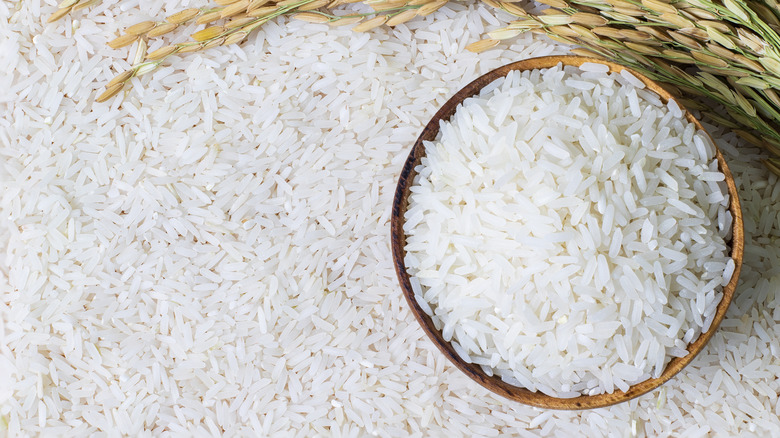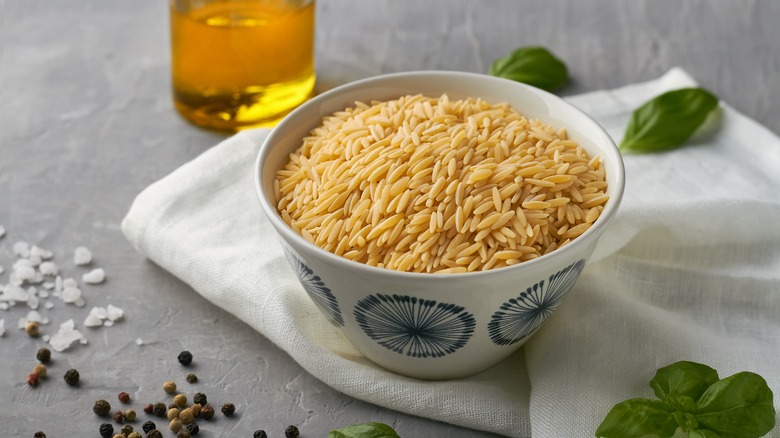Here's What To Expect If You're Swapping In Rice For Orzo Pasta
If you've ever wondered if orzo is a type of rice, you're not alone. Although orzo is shaped similarly to short-grain rice, it is not rice. Orzo is a pastina – an Italian word that means "little pasta." This means orzo pasta is unfortunately not always a direct one-to-one substitute for rice, which is a grain. Their cooking times and cooked textures vary wildly from each other, so you'll have to keep these differences in mind when you're going to substitute one for the other.
Ultimately, when you're in a pinch, rice can be a sufficient substitute for orzo. But to do this successfully, there are a few things to keep in mind. Every recipe will have different aspects to consider when doing this swap. Let's break down these rice and orzo pasta differences so you're prepared to use rice as a substitute the right way — and not end up throwing dinner in the bin.
Major differences in rice and orzo pasta
With a perfectly cooked pot of rice, you have a fluffy starch with a slightly chewy texture. Orzo, on the other hand, is soft, creamy, and buttery, like other cooked pasta. Another key difference is the stickiness of rice, which won't lend well to certain recipes. You may not want to try using rice for a pasta salad, for example, as it could clump together.
If you're making a soup or stew, rice can work well as a substitution for orzo pasta. However, you may want to cook the rice separately before adding it. Rice is so starchy that when cooked with the broth, it will thicken considerably. That said, you can always offset this by adding more liquid.
Also, if your recipe originally calls for orzo pasta and you choose rice, expect a longer cooking time. Orzo can take from 8 to 10 minutes to cook to al dente, while white rice can take up to 20 minutes. And if you go for whole-grain rice like brown or even wild rice, your cooking time can be increased up to 45 minutes.
What kind of rice works best as a sub for orzo?
Orzo is a favorite choice for hearty meals with longer cooking times. It's made with semolina flour, which makes this pasta shape dense and sturdy. This allows the orzo to hold its shape and texture even through long and slow cooking processes. With this in mind, if you are substituting rice for orzo, you want to choose a kind of rice that doesn't break down quickly.
Look for types of rice that have the longest cooking times to ensure they will be up to the task. As mentioned, brown rice and wild rice both take considerable time to cook, so look at either of these as your potential orzo replacement. (Plus, these are both kinds of whole-grain rice and have higher nutritional value.) Avoid delicate rice, like basmati, and don't even think about reaching for instant white rice.
Now that you're aware of the major differences between orzo and rice, just look at the requirements and desired results for the orzo dish you're making. If it seems feasible, make adjustments where necessary to the recipe, and give it a go.


